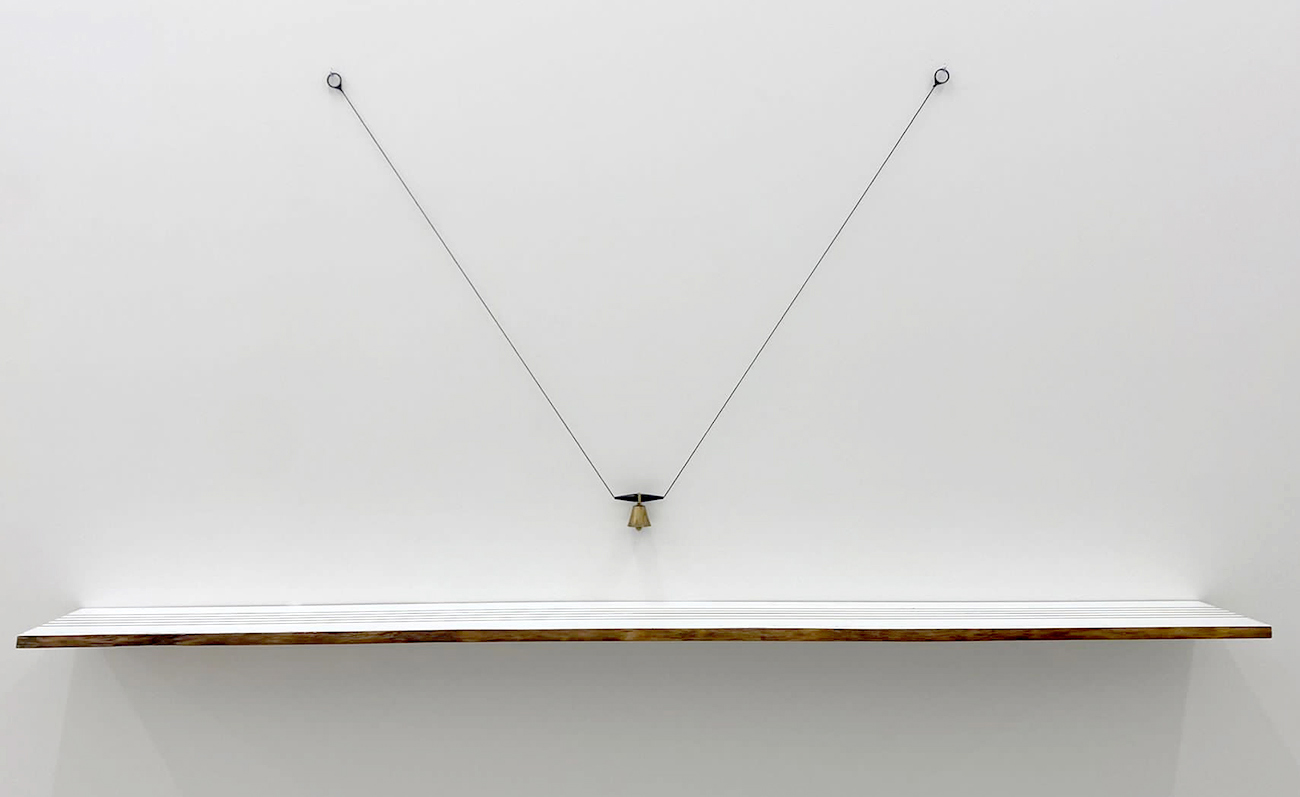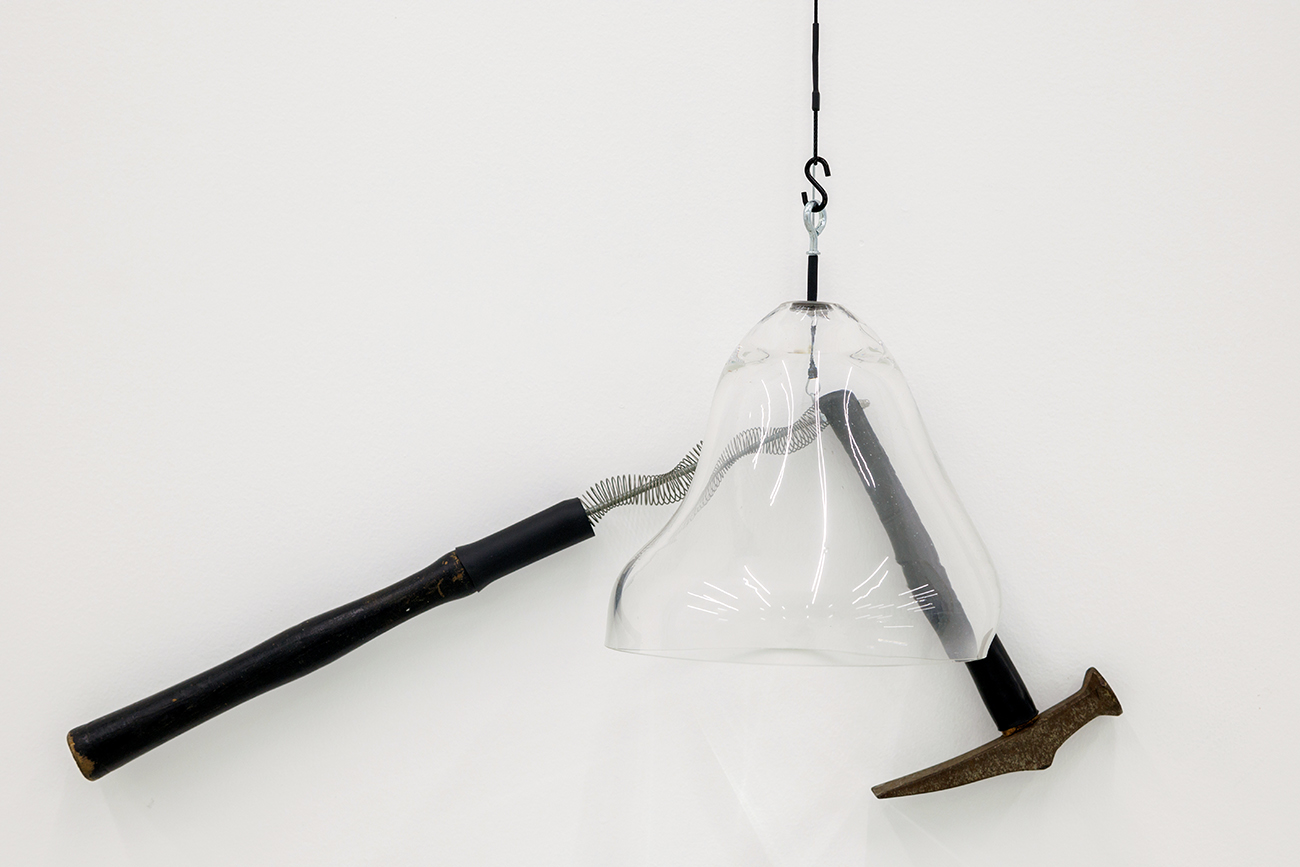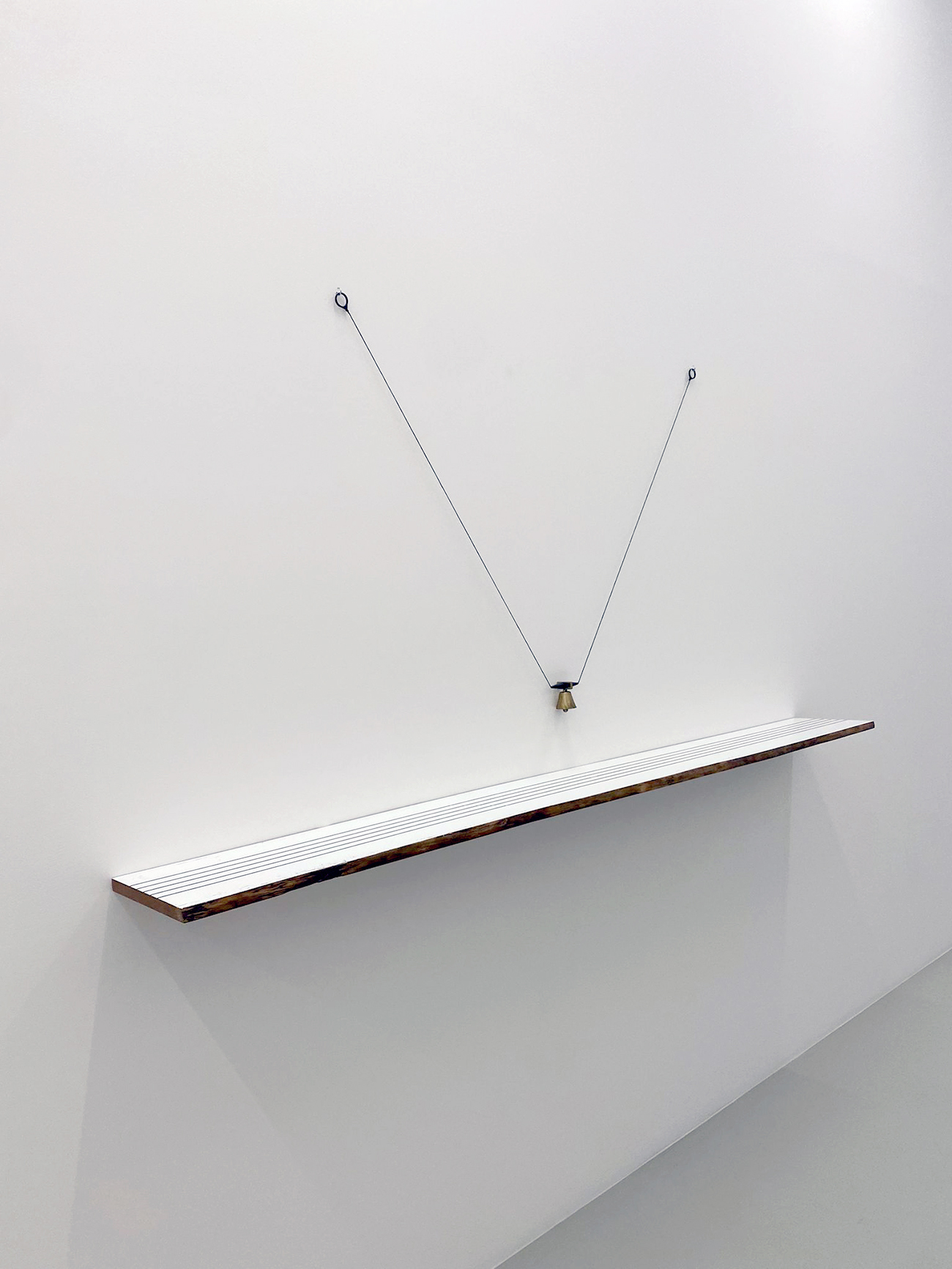Curator by Carla Carbone
Forum Arte, Braga
"How Design sounds" is an opportunity to reveal the sonic sensibilities of designers and artists, in an attempt to achieve a communion between the arts. An exhibition in which sound is the main protagonist, and establishes relationships, or resonances, between the various works. The works sometimes offer us delightful melodies, and on other occasions, now muted, they invoke memories of long hidden and forgotten sounds.
Taking everyone by surprise. "How Design sounds" intends to be a corollary of emotions, and sensory experiences, which, through sound, reverberate to an experience that involves multiple hands and tonalities. In this manner, sound serves as an aggregating element, which unites design with art, and art with poetry.
Designers and Artists:
Beppe Finessi Bruno Munari e Davide Mosconi
Christina Kubisch
David Hoffman
Dieter Rams e Hans Gugelot
Fernando Brízio
Harry Bertoia
Jelle Mastenbroek
João Ferro Martins
Luísa Cunha
Matali Crasset
Michael Graves
Miguel Palma
Miguel Vieira Baptista
Pedro Tudela
Richard Shapper
Rui Calçada Bastos
Salette Tavares
Sweet Scope
How Design Sounds
It is night: now all the gushing fountains speak louder. And my soul too is a gushing fountain.
It is night: only now do all the songs of lovers awaken. And my soul too is the song of a lover.
(…) And so spoke the old sorcerer, he looked around him with a shrewd air and then picked up his harp.
Thinkers have always recognised the power of music, and its supreme force, especially when erupting from a dark and silent night. The restless nights described in Proust's narratives were suddenly pierced by the sound of trumpets, emanating from the darkest and deepest woods. In turn, the nights described by Nietzsche were traversed by inflamed and thunderous songs of lovers, and by abundant, gushing fountains that lit up his soul.
In both cases, the night, the abode of darkness, was peopled by a sense of disquiet and restlessness that was ultimately only calmed by majestic songs, or by complacent voices from beings that inhabited the remotest places on earth.
At one point in time, Zeus’ son, Amphion, had a strong twin brother who was dedicated to the arts of hunting and herding, but he managed to defeat him by moving heavy stones destined for the construction of the wall of Thebes, aided solely by the seraphic sounds from a lyre.
In Nietzsche's work, the wandering old man, Zarathustra, also threatened to dominate his opponents with his ancient harp.
But the enchantment created by the ethereal and sacred melodies from Zarathustra’s harp, would not last forever, nor would the lisping sounds of the musical instruments of ancient orchestras - these representatives of nature - be appreciated forever.
There were those who, with the advent of industry, instead turned to the histrionic noises of engines and delighted in the breath-taking speed of vehicles.
The painter Luigi Russolo was such an enthusiast. In 1913, in a fervent Futurist Manifesto sent to the composer Balilla Pratella, he announced a new art - the art of noise. He said that the time before sound-noise represented a muted existence. He praised the machine's capacity to produce intense and varied sounds, complex and dissonant sounds: “Noise, gushing confusely and irregularly (… ) is never totally revealed to us and harbours innumerable surprises for our benefit. We feel certain that in selecting and coordinating all noises we will enrich men with a voluptuousness they did not suspect existed.”.
How Design Sounds – The Exhibition
A design object cannot solely be a feast for the eyes. There have been many objects conceived by designers who contemplate only one of the senses: that of sight. The object also cannot be solely a receptacle of functions, without intending to arouse emotions or appeal to the other senses. In 1919, in the programme of the Bauhaus school in Weimar, Walter Gropius affirmed the importance of students living together, outside the school grounds, and contact with the different arts, such as poetry, theatre, music. Through this desire to foster a convergence of the arts, Gropius confirmed the importance of the different senses, in addition to sight, in order to train his students, and for the creation of new artistic or utilitarian objects.
Many design objects - and there are numerous examples in history – have been created in order to satisfy the eye, and have tended to overlook the sensations triggered by touch, weight, or temperature. Bruno Munari, in his book “How objects are born”, refers specifically to acoustics, in public spaces, stating that this is an important element to be taken into account by designers, to ensure people’s well-being. This exhibition focuses on one of the other senses: hearing.
Sound can appear as an indicator in objects, as an alert, or can serve as evidence of a specific operation. It also lets us know when something isn't right, or when we're not safe. For example, some traffic lights are accompanied by sounds when the coloured light changes. In addition to the visual signal, and the tactile sensation that the object transmits, sound can also emphasise its functions. And the object incorporates several of these functions - such as practical, aesthetic, symbolic and playful functions.
Designers and artists, aware of the presence of sound in objects - which increased with the advent of industrial production – have taken advantage of sound’s expressive qualities and have invoked potential recollections.
In the 1980s, Richard Sapper designed a kettle with a whistle – the 9091 Bollitore (1983). Although his career was marked by works that were profoundly linked to industrial production, he managed to circumvent the rigidity of mass production, and applied a postmodernist, creative and humorous dimension to his works.
The designer, Henry Bertoia – who is renowned for his iconic Two-Tone Side Chair - was also a musician, and created sculptures/objects that were solely and exclusively designed to be used as musical instruments, in experimental sound compositions.
It is also worth looking into objects of an anonymous origin, and the way in which they have been used in sound experiments, such as those conducted by Pierre Henry in his 1963 work, Variations pour une porte et un soupir. These experiments included a series of noise recordings, primarily doors that would creak or slam, or make long sounds, as if they were whining or crying.
It is worth recalling Edgar Varèse and his Poème èlectronique - an electronic musical composition created for the Phillips Pavilion, a temporary building designed by Xenakis and Le Corbusier. Or the composer John Cage who said that “everything we do is music”, and his emblematic work, “4´33”.
This exhibition aims to capture a new “perspective” of objects - not related to their immediate use or visual fruition -which seeks to encourage visitors to listen to objects, their murmurs, resonances and songs and understand that sounds are also a property of objects, complementing them and orientating human beings.
How Design Sounds will therefore offer an opportunity to reveal the sonic sensitivities of designers and artists, in a communion of the arts. An exhibition where sound is the protagonist, and establishes relationships, or resonances, between the various works.
The works sometimes offer us delightful melodies, and on other occasions, now muted, they invoke memories of long hidden and forgotten sounds. Taking everyone by surprise. "How Design Sounds" intends to be a corollary of emotions, and sensory experiences, which, through sound, reverberate to an experience that involves multiple hands and tonalities. In this manner, sound serves as an aggregating element, which unites design with art, and art with poetry.
Carla Carbone, 4 December, 2022



